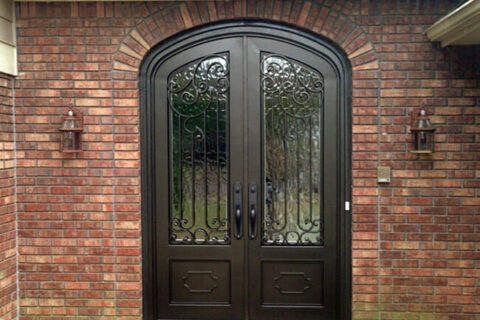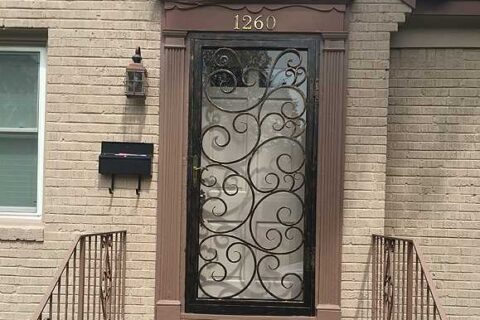Can You Add a Screen Door to an Existing Door?

Adding a screen door to an existing door is a great way to let in some fresh air while keeping out unwanted bugs and critters. There are a few things to keep in mind when adding a screen door, however, to make sure it is installed correctly and will provide the desired results. Read on to learn more about screen doors, the different types to choose from, and the best way to go about adding one to your home.
Are Screen Doors Universal?
The answer to this question is both yes and no. While screen doors are designed to fit a variety of door sizes, there are some standard measurements that most manufacturers use. This means that while a screen door might fit a variety of door sizes, it might not fit every single door size out there. If you’re unsure whether a screen door will fit your door, it’s always best to measure the door before making a purchase.
Types of Screen Doors
There are a few different types of screen doors, and each type has its own set of measurements, style, material, and hardware.
Screen doors are typically made from either wood or aluminum. Wood is the more traditional choice and is usually more expensive, but it can be painted or stained to match your home’s exterior. Aluminum screen doors are less expensive and don’t require as much maintenance, but they’re not as durable as wood doors.
Most screen doors come with either brass or stainless-steel hardware. Brass is more expensive but it’s also more durable, while stainless steel is less expensive but can be more difficult to keep clean.
Hinged
The most common type of screen door is the hinged screen door. These doors usually have two hinge plates that attach to the door frame, and the door itself is attached to these hinge plates. The measurement that’s most important for hinged screen doors is the distance between the hinge plates. Most manufacturers use a standard measurement of six inches, but some use four inches or even eight inches.
Sliding
Another type of screen door is the sliding screen door. These doors have a track that runs along the top and bottom of the door frame, and the door slides along this track. The measurements that are most important for sliding screen doors are the width of the track and the height of the door. Most manufacturers use a standard measurement of six feet for the width of the track and seven feet for the height of the door.
Storm
Storm doors are designed to be installed over an existing door, and they usually have a glass panel that can be opened to let in light or ventilation. The measurements that are most important for storm doors are the width of the glass panel and the height of the door. Most manufacturers use a standard measurement of 24 inches for the width of the glass panel and 80 inches for the height of the door.
Retractable Screen Doors
Retractable screen doors are a great way to keep your home airy and bug-free. They roll up into a small space when not in use, so you can enjoy the fresh air without worry. These doors are also known as disappearing screens or disappearing storm doors.
There are many different types of retractable screen doors on the market, so it’s important to choose one that will fit your needs.
Screen Door Installation
When it comes to installation, most screen doors are easy to install yourself in three basic steps:
- Take accurate measurements of the door opening.
- Purchase your screen doors.
- Consider the type of hardware you’ll need for installation.
- Follow the manufacturers’ instructions carefully.
If you’re not comfortable doing it yourself, there are plenty of companies that offer screen door installation services.
Don’t Forget to Seal and Secure Your Screen Doors
Screen doors are great for keeping bugs and other pests out of your home while allowing for some extra ventilation. But if they’re not properly sealed, they can also let in hot air from outside, making your home uncomfortable and driving up your energy bills.
To seal your screen door, start by checking the weatherstripping around the door frame. If it’s worn or damaged, replace it with new weatherstripping. Then, use caulk to fill any gaps around the doorframe.
Once the door is sealed, you also need to make sure it’s secured. A loose or unsecured screen door can be a safety hazard, especially for small children and pets.
To secure your screen door, start by checking the hinges. Make sure they’re tight and not wobbly. Then, check the latch to make sure it’s working properly. If the latch is loose, tighten it up.
You should also consider adding a security bar or chain to your screen door. This will help keep it from being forced open by intruders.
By taking a few minutes to seal and secure your screen doors, you can help keep your home comfortable and safe all summer long. Contact Maclin Security Doors in Memphis, TN today at 901-377-2456 to learn more about screen doors and installation!


